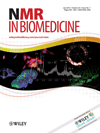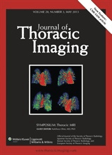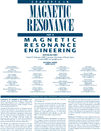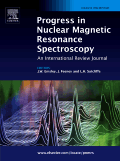
NMR IN BIOMEDICINE
Scope & Guideline
Unveiling Innovations in NMR Applications for Medicine
Introduction
Aims and Scopes
- Nuclear Magnetic Resonance Techniques:
The journal covers a wide array of NMR techniques, including but not limited to proton, phosphorus, and carbon magnetic resonance spectroscopy. It explores their applications in assessing metabolic processes, disease mechanisms, and therapeutic responses. - Imaging Innovations:
There is a strong focus on innovations in MRI technology, including the development of advanced pulse sequences, imaging protocols, and hardware improvements to enhance image quality and diagnostic capabilities. - Clinical Applications:
The journal emphasizes the translation of NMR and MRI techniques into clinical practice, addressing areas such as oncology, neurology, cardiology, and musculoskeletal disorders, thereby bridging the gap between research and patient care. - Metabolic and Physiological Insights:
Research published often investigates metabolic pathways and physiological changes through non-invasive imaging, contributing to a better understanding of disease processes and potential therapeutic targets. - Machine Learning and Data Analysis:
Recent trends in the journal highlight the application of machine learning and data analysis techniques to improve image reconstruction, interpretation, and quantification in MRI and NMR studies.
Trending and Emerging
- Hyperpolarized Magnetic Resonance:
Research utilizing hyperpolarized agents for dynamic imaging and metabolic assessment is gaining traction. This approach allows for real-time monitoring of metabolic processes, significantly enhancing the sensitivity and specificity of imaging techniques. - Integration of Machine Learning:
There is a marked increase in the use of machine learning algorithms for image reconstruction, segmentation, and analysis. This trend indicates a shift towards data-driven methodologies that enhance the efficiency and accuracy of MRI and NMR studies. - Multimodal Imaging Approaches:
Emerging studies are increasingly adopting multimodal imaging techniques that combine MRI with other imaging modalities (such as PET or CT) to provide comprehensive insights into disease mechanisms and treatment responses. - Advancements in Diffusion Imaging:
Research focusing on advanced diffusion imaging techniques, including intravoxel incoherent motion (IVIM) and diffusion tensor imaging (DTI), is on the rise. These methods are pivotal for understanding microstructural changes in tissues, particularly in oncology and neurology. - Chemical Exchange Saturation Transfer (CEST) MRI:
CEST MRI is emerging as a promising technique for assessing biochemical changes in tissues. Its ability to provide metabolic information non-invasively is attracting significant research attention.
Declining or Waning
- Traditional Spectroscopy Approaches:
There seems to be a decline in the frequency of traditional spectroscopy methods without advanced modifications. As the field evolves, there is a noticeable shift towards more sophisticated techniques that integrate machine learning and advanced imaging methodologies. - Basic Research Without Clinical Relevance:
Research that does not directly translate to clinical applications or lacks a clear biomedical context appears to be diminishing. The journal increasingly favors studies that can inform clinical practices or enhance patient outcomes. - Focus on Static Imaging Techniques:
There is a waning interest in static imaging techniques that do not capture dynamic physiological processes. The journal is shifting towards research that emphasizes real-time imaging and monitoring of biological systems.
Similar Journals

JOURNAL OF THORACIC IMAGING
Pioneering Discoveries in Thoracic HealthThe JOURNAL OF THORACIC IMAGING, published by Lippincott Williams & Wilkins, stands as a pivotal resource in the fields of Pulmonary and Respiratory Medicine as well as Radiology, Nuclear Medicine, and Imaging. With the ISSN 0883-5993 and E-ISSN 1536-0237, this esteemed journal has been providing critical insights and advancements since its inception in 1985, contributing significantly to the ongoing dialogue and research within these disciplines. The journal maintains a commendable position, ranking in the Q2 category in both relevant fields and achieving an impressive Scopus ranking of #46 out of 333 in Radiology and #30 out of 155 in Pulmonary Medicine, showcasing its influence and impact (with particles in the 86th and 80th percentiles, respectively). While the journal is not open access, it continues to disseminate high-quality research that informs clinical best practices and emerging technologies in thoracic imaging. As a leading publication, it serves as an essential tool for researchers, clinicians, and students seeking to stay at the forefront of thoracic health innovations.

Magnetic Resonance Imaging Clinics of North America
Exploring the depths of MRI for enhanced clinical applications.Magnetic Resonance Imaging Clinics of North America, published by W B Saunders Co-Elsevier Inc, serves as a vital resource in the field of radiology, nuclear medicine, and imaging. With a Q2 ranking in the 2023 category quartiles, it reflects its significance and contribution to advancing the understanding and applications of magnetic resonance imaging. Established in 1993, this journal has continuously provided insightful reviews and clinical techniques that bridge the gap between theoretical research and practical application, making it essential for both seasoned practitioners and emerging professionals. Although it does not offer open access, the journal boasts a robust readership due to its high-impact research articles and comprehensive reviews, facilitating the ongoing education and development of its audience. Operating out of Philadelphia, PA, this journal aims to enhance clinical practices and patient care through disseminating cutting-edge knowledge in MRI.

Forensic Imaging
Exploring the intersection of pathology, medicine, and imaging.Forensic Imaging is a premier international journal dedicated to advancing the field of forensic science through the analysis and implementation of imaging techniques. Published by ELSEVIER, this open access journal provides a platform for researchers, professionals, and students to disseminate innovative studies that bridge the disciplines of Pathology, Forensic Medicine, and Radiology. Since its inception in 2020, it has gained recognition and holds a respectable Q3 ranking in its categories for both Pathology and Forensic Medicine and Radiology, Nuclear Medicine and Imaging, reflecting its commitment to high-quality, impactful research. The journal's practical focus on imaging methodologies offers valuable insights into forensic investigations and enhances professional practices, making it an essential read for those involved in forensic research and application. Available in both print and online formats, Forensic Imaging serves as a vital resource for fostering breakthroughs in the analysis of forensic evidence.

CONCEPTS IN MAGNETIC RESONANCE PART B-MAGNETIC RESONANCE ENGINEERING
Empowering Professionals with Open Access to Pioneering Research.CONCEPTS IN MAGNETIC RESONANCE PART B-MAGNETIC RESONANCE ENGINEERING is a premier journal published by WILEY-HINDAWI, dedicated to advancing the field of magnetic resonance engineering. With an ISSN of 1552-5031 and E-ISSN 1552-504X, this journal offers an Open Access platform since 2022, ensuring that research is freely accessible to scholars worldwide. Covering a broad spectrum of applications in medicine, radiology, nuclear medicine, and imaging, it serves as a key resource for professionals looking to stay updated with the latest advancements and innovations in the field. The journal enjoys notable rankings in various categories, including a rank of #137 in Medicine and #26 in Health Professions within Scopus, reflecting its importance and influence in both academic and clinical settings. As a vital conduit for cutting-edge research, CONCEPTS IN MAGNETIC RESONANCE PART B is committed to fostering the growth of knowledge while addressing the critical challenges and technological enhancements within magnetic resonance methodologies. Researchers, professionals, and students can expect to find comprehensive articles that adhere to high scientific standards, promoting discourse and collaboration across disciplines.

EUROPEAN JOURNAL OF RADIOLOGY
Innovating Radiology for a Healthier FutureThe European Journal of Radiology, published by Elsevier Ireland Ltd, is a premier peer-reviewed journal in the fields of radiology, nuclear medicine, and imaging. Established in 1981, it has carved a significant niche within the academic community, showcasing innovative research that enhances medical imaging practices and improves patient care. With an impressive ranking in the Q1 category for both Medicine (miscellaneous) and Radiology, Nuclear Medicine, and Imaging in 2023, the journal is recognized globally for its commitment to advancing scientific knowledge and improving imaging methodologies. The journal's Scopus ranking of #60/333, placing it in the 82nd percentile, underlines its reputation for high-quality research and scholarly contributions. While traditionally a subscription-based journal, it continually evolves to meet the demands of the academic landscape, aiming to bridge the gap between research and clinical practice. Researchers, healthcare professionals, and students alike can benefit from exploring its extensive archives and current publications, which are curated to foster education and innovation in the medical imaging domain.

PROGRESS IN NUCLEAR MAGNETIC RESONANCE SPECTROSCOPY
Unlocking the Potential of Nuclear Magnetic ResonancePROGRESS IN NUCLEAR MAGNETIC RESONANCE SPECTROSCOPY, published by PERGAMON-ELSEVIER SCIENCE LTD, is a premier journal dedicated to advancing the field of Nuclear Magnetic Resonance (NMR) spectroscopy, catering to a wide audience of researchers, professionals, and students engaged in analytical chemistry, biochemistry, materials science, and nuclear physics. With an impressive reputation reflected in multiple Q1 rankings across its relevant categories for 2023, this journal is recognized for its high-quality publications that contribute significantly to the understanding and application of NMR techniques. Although not open access, it remains a vital resource for those seeking to push the boundaries of scientific knowledge and innovation in various disciplines. Published continuously since 1965, this journal not only archives a rich history of NMR research but also presents cutting-edge findings and methodologies, making it an essential reference for anyone involved in this evolving field. The journal’s focus on impactful research, evidenced by its strong Scopus rankings, ensures a scholarly platform where the latest advancements meet the methodological rigor needed for real-world applications.

Journal of Magnetic Resonance Open
Elevating Research Standards in Magnetic Resonance and SpectroscopyThe Journal of Magnetic Resonance Open, published by ELSEVIER, is a premier open access journal dedicated to the dissemination of groundbreaking research in magnetic resonance and its applications across various scientific domains. Since its launch in 2019, this journal has carved a niche in the fields of analytical chemistry, electronic, optical, and magnetic materials, as well as radiology and spectroscopy. It holds a commendable position in the academic community, reflected by its 2023 category quartiles, ranking Q2 in both analytical chemistry and electronic materials, and Q3 in radiology and spectroscopy. With an emphasis on open access, Journal of Magnetic Resonance Open provides unrestricted access to research articles, fostering collaboration and innovation. Researchers, professionals, and students will find valuable insights within its pages, contributing to the growing body of knowledge in these dynamic fields, making it an essential resource for staying at the forefront of scientific advancements.

Magnetic Resonance in Medical Sciences
Empowering Researchers in Medical Imaging ExcellenceMagnetic Resonance in Medical Sciences is a leading open-access journal published by the Japanese Society of Magnetic Resonance Medicine, dedicated to advancing the field of medical imaging through high-quality research articles and reviews. With a strong focus on radiology, nuclear medicine, and imaging technologies, this journal serves as a crucial platform for the dissemination of innovative studies, as evidenced by its impressive Scopus ranking of #75 in its category and a commendable 77th percentile standing. Since its inception in 2002 and becoming open access in 2016, it has fostered a collaborative research environment, welcoming contributions from both seasoned experts and emerging scholars alike. The journal's commitment to enhancing diagnostic techniques and patient outcomes makes it an invaluable resource for researchers, healthcare professionals, and students passionate about the transformative potential of magnetic resonance imaging. Located in Tokyo, Japan, Magnetic Resonance in Medical Sciences continues to shape the future of medical imaging through rigorous scholarship and impactful research.

JACC-Cardiovascular Imaging
Unveiling New Frontiers in Imaging TechniquesJACC-Cardiovascular Imaging, published by Elsevier Science Inc, is a premier journal that focuses on the rapidly evolving field of cardiovascular imaging, providing a vital platform for the dissemination of high-quality research and clinical studies. With an impressive impact factor and ranking within the top tier of cardiology and radiology specialties, the journal is recognized for its commitment to advancing knowledge in diagnostic imaging techniques, including echocardiography, MRI, and CT in cardiovascular contexts. Since its inception in 2008 and converging through 2024, JACC-Cardiovascular Imaging has maintained a distinguished position, currently ranking Q1 both in Cardiology and Cardiovascular Medicine as well as in Radiology, Nuclear Medicine and Imaging. This ensures its relevance and influence, as evidenced by its Scopus rankings—ranked #2 in Radiology and #8 in Cardiology, placing it in the top echelons of scholarly output. Although it does not offer open access, the journal's content is crucial for researchers, clinicians, and students who seek to remain at the forefront of cardiovascular imaging advancements.

Journal of the Korean Magnetics Society
Connecting researchers in the dynamic field of magnetics.Journal of the Korean Magnetics Society, published by the Korean Magnetics Society, is a prestigious academic journal dedicated to advancing the field of magnetics. Renowned for its contributions to both fundamental and applied magnetics research, this journal spans a wide range of topics, including magnetic materials, magnetometry, and applications in technology. Aimed at researchers, professionals, and students, it serves as a vital platform for disseminating high-quality research and innovative findings within the magnetics community. Although it does not currently offer Open Access options, the journal maintains a high academic standard, supported by its commitment to rigorous peer review processes. Its ISSN 1598-5385 and E-ISSN 2233-6648 ensure that it is easily traceable within academic databases, promoting continuous engagement and scholarship in the disciplines of physics and engineering related to magnetic phenomena. Whether you are looking to publish cutting-edge research or stay abreast of the latest discoveries in magnetics, the Journal of the Korean Magnetics Society is an indispensable resource.